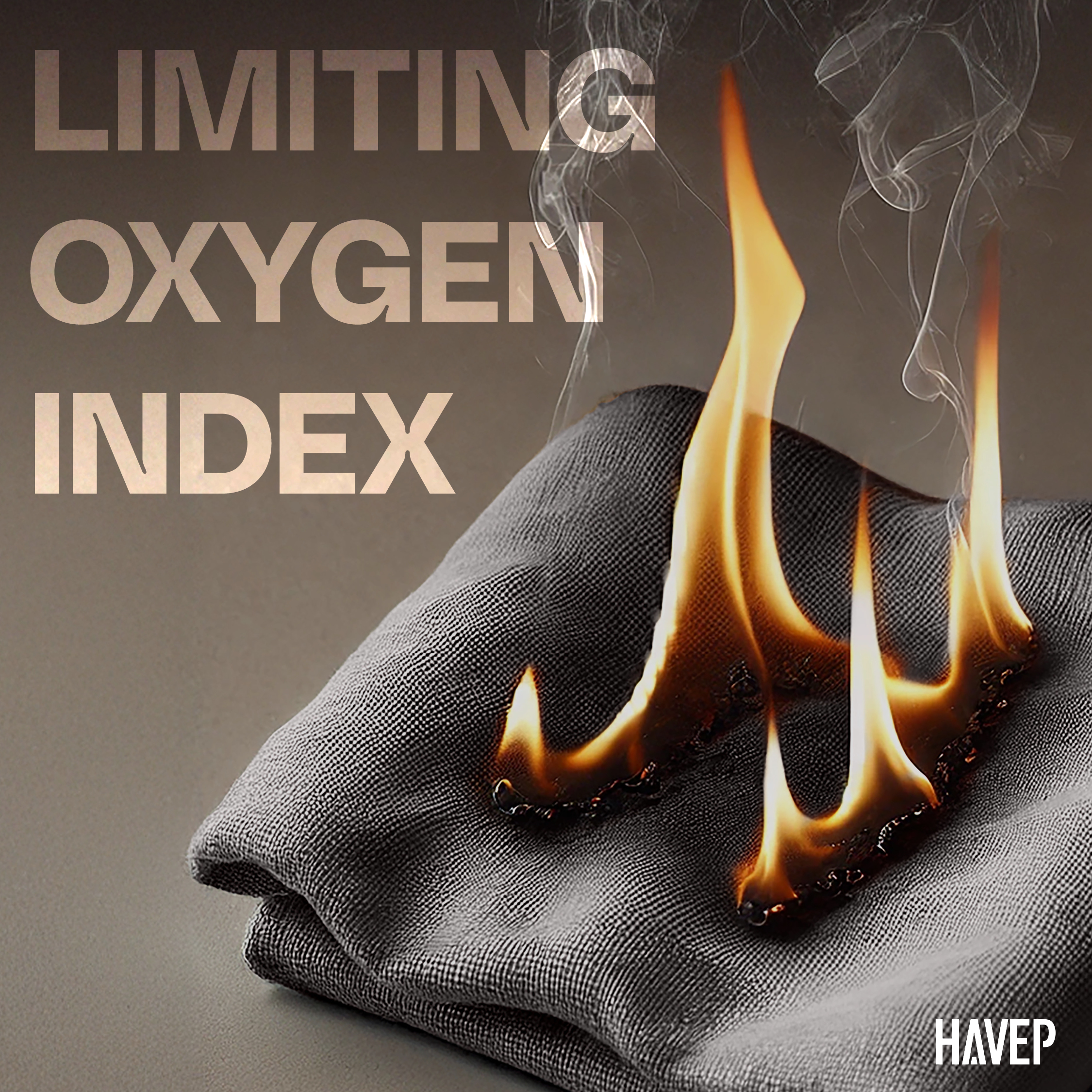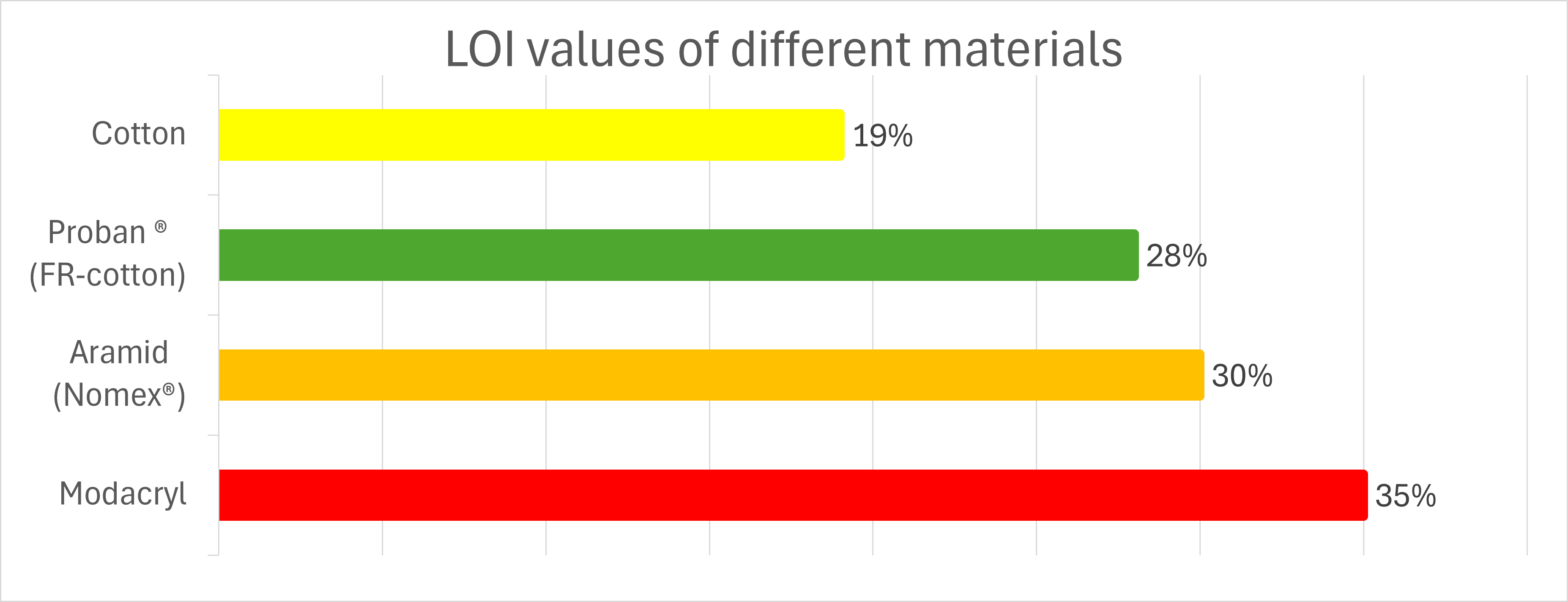Waarom is LOI cruciaal voor werkkleding?
Your employees often work in the most hazardous conditions, where fire caused by sparks, static electricity or open flames is a known risk. That’s why it’s important they wear the right flame-retardant clothing. We select the fibres used in our flame-retardant fabrics based on the LOI. The higher this value, the less flammable the fibre. Our fabrics produced with these fibres are always tested according to the EN 6942 standard, among others.
What does LOI actually mean?
The Limiting Oxygen Index (LOI) indicates the percentage of oxygen needed for a material to ignite. All materials with an LOI below 21% will burn in normal air. The LOI value is expressed as a percentage: the higher the value, the less flammable the material is. For example:
LOI values and flammability
LOI < 21% → Flammable (burns in normal air, which contains 21% oxygen).
LOI 22–27% → Moderately flammable.
LOI > 27% → Difficult to ignite (only burns in air with a higher oxygen level than normal).
The flammability of different materials
Workwear can be made flame-retardant in two ways: by using inherent fibres, which are naturally flame-resistant, or by using FR-treated fabrics, which are treated with a special finish.

What LOI do different materials have?
FR-treated fabrics
Fabrics treated with a flame-retardant finish are typically made of cotton. Cotton is chosen for its comfort, but it naturally has a low LOI. With a Proban® finish, both the comfort and protection of the wearer are ensured.
Untreated cotton LOI: ~18–20%
Cotton naturally has a low LOI value and is therefore highly flammable. Once it comes into contact with fire, it ignites quickly and continues to burn even after the flame is removed.
Proban® (FR-treated cotton) LOI: ~26–30%
Proban® is a chemical finish commonly applied to cotton to add flame-retardant properties. This treatment makes the fabric harder to ignite and ensures it self-extinguishes once the flame is removed — without changing the natural characteristics of the cotton.
Protective workwear often needs to comply with multiple standards, including high visibility. To ensure visibility, a fluorescent orange colour is often used. However, orange does not adhere well to cotton, but it does to synthetic fibres like polyamide and polyester. These are therefore often blended with cotton to achieve the desired colour. The cotton is then finished to create an FR-treated fabric. The fibres of fluorescent orange fabrics can also be blended with inherently flame-retardant fibres, resulting in an inherent quality.
Polyamide & polyester: flammability and LOI
Untreated polyamide & polyester – LOI: ~20–21%
These fibres have a low LOI value and are highly flammable. When exposed to fire, they melt quickly, start dripping, and the residue forms a hard mass.
Inherent flame-retardant fibres
The inherent flame-retardant fibres we use in our fabrics are aramid and modacrylic. These fibres are naturally flame-resistant and are not chemically modified. For added comfort, they are often blended with cotton and/or polyester. Modacrylic is naturally soft and comfortable, which is why it’s more commonly used in our fabrics.
Modacrylic LOI: ~27–32%
An inherently flame-retardant fibre (the flame resistance is built into the fibre itself).
Does not ignite easily and self-extinguishes.
Often blended with cotton for extra comfort and protection.
Aramid (e.g. Nomex®) LOI: ~28–32%
An inherently flame-retardant fabric.
Highly heat-resistant and widely used in heat-protective clothing.
Difficult to dye, which limits the range of available colours.

Curious about which materials and fabrics we use in our collections to make them flame-retardant? Or do you have questions about the LOI? Feel free to contact us.
